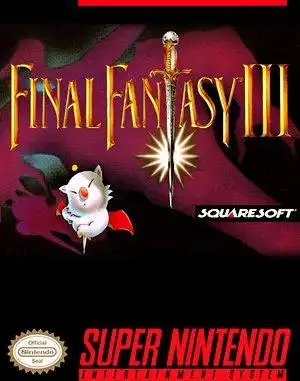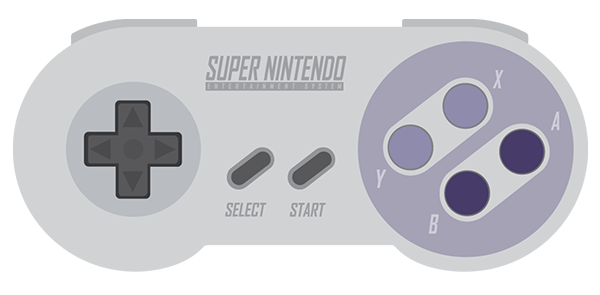Remember gathering around the TV, SNES controller in hand, ready to embark on an epic quest that would redefine what you thought an RPG could be? For many of us in North America, that quest began with a game simply titled Final Fantasy III.
Of course, if you were playing elsewhere or caught up later, you know this legendary title as Final Fantasy VI. That little bit of naming confusion is almost as iconic as the game itself! But no matter what you call it, this is the one that pushed the Super Nintendo to its absolute limits and delivered a narrative and cast of characters that still resonate decades later.
So, why does this particular entry hold such a cherished spot in the hearts of retro gamers? Let's take a trip back to the World of Balance (and Ruin) and find out.
The Name Game: FFIII or FFVI?
Let's get this out of the way upfront for anyone scratching their head. When Final Fantasy III hit the Super Nintendo in North America back in 1994, it was actually the sixth main installment in Japan. Due to previous games not being localized, Square (now Square Enix) decided to renumber it for the Western market.
So, when we talk about the SNES classic with Terra, Locke, Kefka, and that unforgettable opera scene, we're talking about the game known as both Final Fantasy III (SNES) and Final Fantasy VI. Confusion aside, it's the game that matters, and this one is pure magic.
Why FFIII (SNES/VI) Remains a Masterpiece
What sets this game apart from its contemporaries and even many modern RPGs? It's a perfect storm of elements that came together at the peak of the 16-bit era.
- An Epic Story: Moving away from the crystal focus of previous games, FFIII/VI plunges you into a world grappling with an evil Empire, ancient magic, and the mysterious Espers. The narrative isn't just about saving the world; it's deeply personal for its large cast.
- Unforgettable Characters: This is where the game truly shines. With a massive roster of 14 playable characters, each with their own motivations, backstories, and unique abilities, you'll find yourself invested in their individual journeys. From the enigmatic Terra and the treasure hunter Locke, to the noble Edgar and the powerful Sabin, the "Returners" feel like a true family.
- Music That Moves You: Nobuo Uematsu's score for FFIII/VI is simply legendary. Character themes that perfectly capture their essence, grand overworld tunes, intense battle music, and of course, the iconic "Aria di Mezzo Carattere" from the opera scene – it's a soundtrack that sticks with you long after the credits roll.
Gameplay and the Active Time Battle System
FFIII/VI refined the Active Time Battle (ATB) system introduced in previous games, making combat feel dynamic and strategic.
- ATB Refinement: Characters have a gauge that fills over time, determining when they can act. This adds a layer of urgency and requires quick decisions.
- Unique Abilities: Each character boasts distinct skills. Locke can Steal, Edgar uses Tools, Sabin performs Blitz commands via fighting game-style inputs, Celes has Runic to absorb magic, and so on. This variety encourages experimentation with party setups.
- Relics and Espers: Equipping Relics grants passive bonuses or special abilities. Later, acquiring Espers allows characters to learn magic and gain stat boosts upon leveling, adding another layer of customization.
The Villain You Love to Hate: Kefka Palazzo
While the heroes are memorable, the antagonist of FFIII/VI is arguably one of the greatest villains in video game history. Kefka starts as a seemingly clownish jester but quickly reveals himself to be a nihilistic, power-hungry force of pure chaos.
His cruelty knows no bounds, from poisoning a castle's water supply to his shocking act on the Floating Continent that literally shatters the world. Kefka isn't just evil; he's gleefully, terrifyingly insane, making every encounter with him impactful and unpredictable.
The World of Ruin: A Game-Changing Twist
Midway through the game, FFIII/VI pulls off a narrative feat that was revolutionary at the time. Without giving away too much, the world changes dramatically, shifting the game's structure from a linear quest to a more open, exploratory search for scattered party members. This "World of Ruin" section adds significant replayability with numerous side quests, optional characters, and powerful Espers to find.
How to Play Final Fantasy III (SNES/VI) Today
Ready to jump back in or experience this classic JRPGs for the first time? Luckily, Square Enix has made it accessible on modern platforms.
- Final Fantasy VI Pixel Remaster: This is arguably the best modern way to play. Available on Steam, mobile (iOS/Android), PlayStation, and Nintendo Switch, it features beautifully redrawn pixel art, a rearranged soundtrack (with the option for the original), and quality-of-life improvements like auto-battle and adjustable encounter rates.
- Classic Collections: The game has appeared on various collections over the years, such as the PlayStation Anthology and the Game Boy Advance port (as Final Fantasy VI Advance), though these might require older hardware or emulation.
- Emulation: For the purists, playing the original SNES version via emulation is always an option, allowing you to experience the game exactly as it was in 1994. (Remember to own a legal copy of the game!)
Whether you choose the crisp new Pixel Remaster or track down the original, the core experience of Final Fantasy III (SNES/VI) remains as compelling as ever.
Final Thoughts
More than just a video game, Final Fantasy III (SNES/VI) is a cultural touchstone for a generation of RPG fans. Its ambitious scope, emotional storytelling, diverse cast, iconic music, and unforgettable villain set a standard that few games have matched since.
It's a journey filled with moments that stick with you – the opera, the phantom train, Kefka's laugh echoing across the ruined world. If you're looking for a true retro RPG experience that holds up magnificently, look no further. Dust off your memories or prepare to make new ones; the world of FFIII/VI is waiting. The Final Fantasy series has many gems, but this one shines brightest for many.
FAQ
Q: Is Final Fantasy III on SNES the same game as Final Fantasy VI? A: Yes! The game released as Final Fantasy III on the Super Nintendo in North America is the same game released as Final Fantasy VI in Japan and other regions.
Q: What's the best way to play Final Fantasy III/VI today? A: The Pixel Remaster version, available on Steam, mobile, Switch, and PlayStation, is generally considered the most accessible and visually updated version while staying true to the original pixel art style.
Q: Is Final Fantasy III/VI a good starting point for the series? A: Absolutely! While it has connections to previous games in spirit and themes, its standalone story and engaging characters make it an excellent entry point for newcomers to classic JRPGs or the Final Fantasy series.
Q: Is Kefka really that good of a villain? A: Many fans and critics consider Kefka one of the best villains in gaming history due to his chaotic nature, unpredictable cruelty, and significant impact on the game's world and story.


